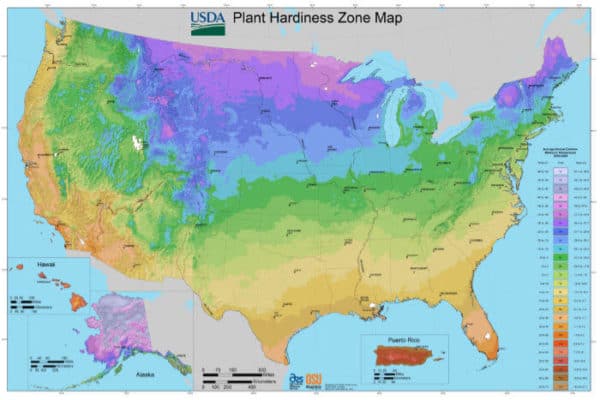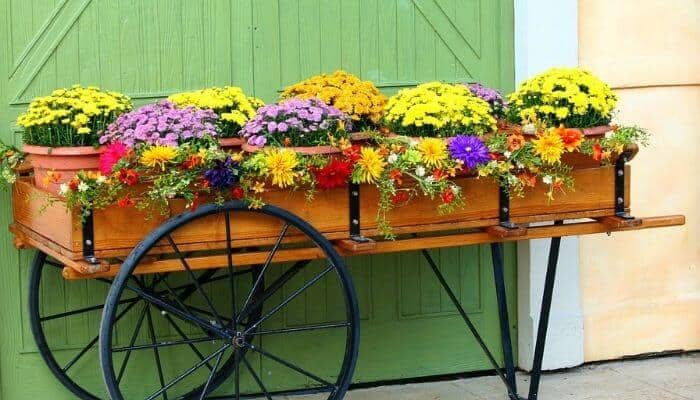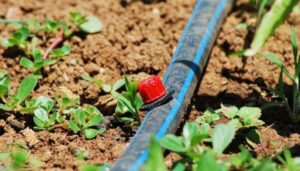Having a green thumb doesn’t necessarily mean you’re an expert on plants. But I’ve not only adopted dying plants and nursed them back, but I’ve also gone out of my way to research the topic of successfully growing plants in the areas where I live.
The best plants for your outdoor space should not only bring beauty to the space but also function. Ideally, they would provide foliage & privacy year-round. If you want your plants to last, they need to be right for the climate, soil type, and amount of sunlight they’ll have in your outdoor space.
Because I’m not sure what climate you live in, what amount of sun your plants will be subject to, and what kind of soil you have, I can’t make exact suggestions. I can give you advice, though. Let me explain the different types of plants that grow well in a backyard space and their uses. Then you’ll have a better idea about what to get.
Which Plants Should I Grow in My Backyard?
My first advice when someone asks me what they should get for their yard is to go to the local extension services in your area. Just like it’s best to go local when you shop so that you’re putting money back into your own local economy – buying plants that are known to grow locally enriches the area.
For one thing, they’ll have a much easier time remaining healthy and lasting if they’re native (they are adapted to the temperatures, precipitation, hydrology, salt, and soils of the region they are in and being purchased for). Wildlife in the area relies on these plants for nourishment and shelter, so planting them will encourage continuing a good ecosystem.

For instance, plants specific to the coastal region are already more likely to withstand storms and flooding because they are native to this area. We just moved from the western piedmont of North Carolina to the coastal plain and the growing zones are very different. We want to plant native plants that will not only work with the soil type but also the climate and temperature in our area.
Before you hit up your local greenhouses or farmers’ markets for your next bunch of plants, maybe you should have some ideas for what you like that’s native first? Or ask the folks you meet at these places if they can direct you to native flora. You can google this kind of information from an online almanac or use your local extension services as well.
Which Plants Would Give Me Year-Round Greenery?
The next thing I take into consideration when designing my outdoor space is where to place evergreens. Sure, all those spring and summer blooms are beautiful, but I want a space that has greenery all year round. If I want that, I need to plant evergreens throughout the space with the plants that will lose their foliage when cold weather hits.
Evergreens are truly the backbone of a good garden plan.
Remember that most evergreens are going to be your taller plants. They should be planted with that in mind – the taller near the back portion of the bed, while the shorter is upfront. The annuals and perennials that will go dormant during the cold season should be planted around them and also be planted according to visual lines so all plants are seen.
The great thing about evergreens is that they are very hardy plants and can withstand most growing conditions. The main thing to be sure of is ideal soil and climate. In our area, we have a very mild cold season, an intense hot season, and sandy soil. So, I’m looking for plants that can handle all of that. My local nurseries, arborists, and extension offices can help, but I thought I’d list some good ones.

| Plant | Possible Size | Preferred Sun | Preferred Soil |
|---|---|---|---|
| Lavender | Bush mound | Full | Sandy pH 6-8 |
| Cherry Laurel | Shrub to tree | All Kinds | Moist but drained |
| Privet | Shrub | Full | Drained (can tolerate salty) |
| Gardenia | Shrub | Full/Partial | Moist but drained |
| Yew | Shrub to tree | All Kinds | Any but drained |
Which Outdoor Plants Are Good for Privacy?
The fact that you have an outdoor space is fantastic. But what if you want to go out there and lose yourself to the world? What if you don’t necessarily want to be drug into conversations with neighbors while you enjoy your outdoor space, but you also don’t want to be rude about it?
That’s where planting for privacy comes into play. There are several methods for planting that enhance the privacy of your outdoor space. For one thing, walls can be made by stretching a cord between two posts and planting vines that then will grow up the provided trellis. Another method is purchasing shrubs that can be properly spaced to grow into one another, providing a natural buffer.
Some of the plants that are evergreen also fall into this category, so I’m saving those for this list instead of using the list above for them.

| Plant | Possible Size | Preferred Sun | Preferred Soil |
|---|---|---|---|
| Arborvitae | Shrubs to Trees | Full | Moist but drained |
| Boxwood | Shrubs to Screening | Full | Any but drained |
| Wisteria | Vines or Shrubs | Full | Any but drained |
| Jasmine | Vines | Full/Part | Any but drained |
| Black-eyed Susan Vine | Vines | Full/Part | Moist but drained |
Which Plants Would Be Useful In My Outdoor Space?
I don’t know about you, but if I’m going to be taking care of plants and fostering a good outdoor space using planters, I also want my closest plants to have more than just aesthetic appeal. I want them to help me keep pest bugs away, encourage the insects that I want to see and nurture, and if they can produce something me and my family can use? All the better.
So let’s look at practical plants.
Now, keep in mind that you don’t want to plant something that you don’t like to smell in an area very close to where you plan on sitting. I love the look of mint, and the practicality of being able to just walk outside and get some sprigs for a recipe or a spell, but I don’t necessarily like the strong smell the actual plant puts off. So it’s going to be planted away from my seating area.
Speaking of mint, also remember that plants have spread. So, if you want to keep your beds nice and neat, you wouldn’t want to plant something in them that could get out of hand. They spread like crazy! So, you may want to plant these in places where they can be contained and not where they can take over an entire bed, suffocating your other plant investments.
What else grows like crazy, but repels mosquitos? Mint, basil, lemon balm, lemongrass, citronella, and lavender … are just a few good spices that can be used not only as an insect repellent but also for cooking among other things.

| Plant | Possible Size | Preferred Sun | Preferred Soil |
|---|---|---|---|
| Rosemary & Thyme | Shrub/Mound | Full | Well-drained |
| Marigold | Large flowering stalk | Full/Part | Loose rich drained |
| Strawberries | Mounded vines | Full | Loose rich drained |
| Cherry Tomatoes | Supportable Bushes | Full | Loose rich and moist |
| Fuchsia | Mounded/hanging | Indirect/Filtered | Loose rich moist |
I could keep going on and on and on for this particular listing. Why? Because I am a plant scavenger/rescuer. I will haunt the aisles of the local retailers looking for discounted plants that I can take home to revive. I wound up with an impromptu strawberry bed that the kids in the neighborhood loved because of this habit.
I like plants having a purpose. So herbs like oregano, thyme, chives, sage, parsley – I’ll plant them and enjoy them year after year. I also love giving pollinators good food. So I’ll place catmint, cuphea, lantana, and butterfly bushes wherever I can.
I wanted to include some non-native plants that have been a favorite to grow in places that I’ve lived – temperate zones in North America. I’ve had really good luck in keeping these in raised beds, planters, pots, and even planting them in-ground.

| Plant | Possible Size | Preferred Sun | Preferred Soil |
|---|---|---|---|
| Alyssum | Ground/Mound | Full | Moist but drained |
| Caladium | Mound | Indirect/Filtered | Loose rich drained |
| Pansies | Mound | All Kinds | Loose rich well-drained |
| Aucuba | Shrub | Shaded/Part | Loose rich drained |
| Croton | Shrub | Full | Loose rich drained |
Final Thoughts
I prefer planting anything that can be used for cooking (herbs) for spiritual work (herbs and plants used in spiritual practices) or for eating (fruit/vegetable/nit bearing plants) in my yard over strictly ornamental plants. But you can set your planters, beds, and gardens up in any way you please. These are just some suggestions and some things to think about before you dive in.
Again, always be aware of the plant’s particular needs, and be sure you purchase plants that work for the space you have depending on the important factors – sunlight, soil, and climate.
I hope you find the plants that are right for you and wish you luck in making your outdoor space the perfect space for you and yours.










